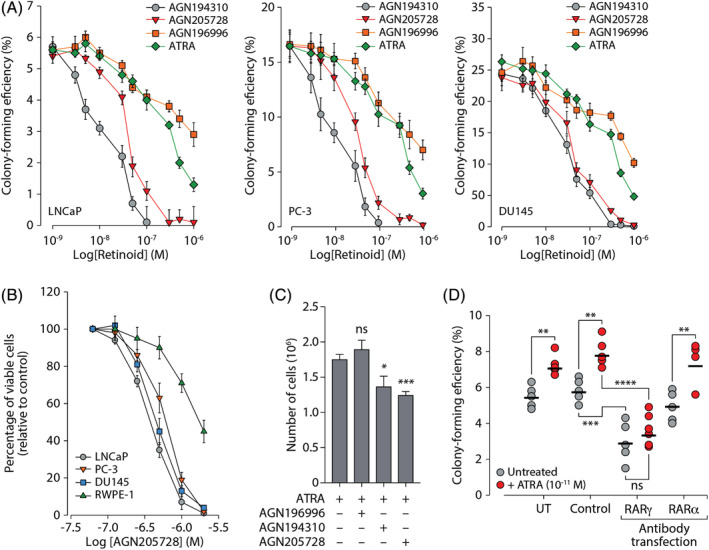FIGURE 4.

Antagonism of RARγ inhibits growth of prostate cancer cell lines. (A) The ability of serum‐free adapted LNCaP, PC‐3, or DU145 cells to form colonies was analyzed in response to treatment with ATRA, AGN196996, pan‐RAR antagonist AGN194310, or RARγ‐selective antagonist AGN205728 at the indicated concentrations. Results are presented as mean colony‐forming efficiencies (±SD). (B) Serum‐free adapted LNCaP, PC‐3, DU145, or RWPE‐1 cells were treated with AGN205728 as indicated. Metabolic activity (intracellular ATP concentration) was measured using the Vialight HS High Sensitivity Cell Proliferation/Cytotoxicity assay. Results are presented as percentage of viable cells relative to control (±SD). (C) Serum‐free grown LNCaP cells were treated 5 × 10−8 M AGN196996, AGN194310, or AGN205728 or vehicle control as indicated for 12 hours prior to stimulation with 10−10 M ATRA. After 96 hours cells, cells were harvested by trypsinization and counted. The data are presented as the mean number of cells recovered from three separate flasks (±SD). (D) Serum‐free grown LNCaP cells were transfected with polyclonal antibodies directed against RARα or RARγ as indicated. Cells were grown for 12 days post‐transfection ± ATRA as indicated and analyzed for ability to form colonies. Results are presented as mean colony‐forming efficiencies (±SD). Statistical significance is represented as described in Section 2
